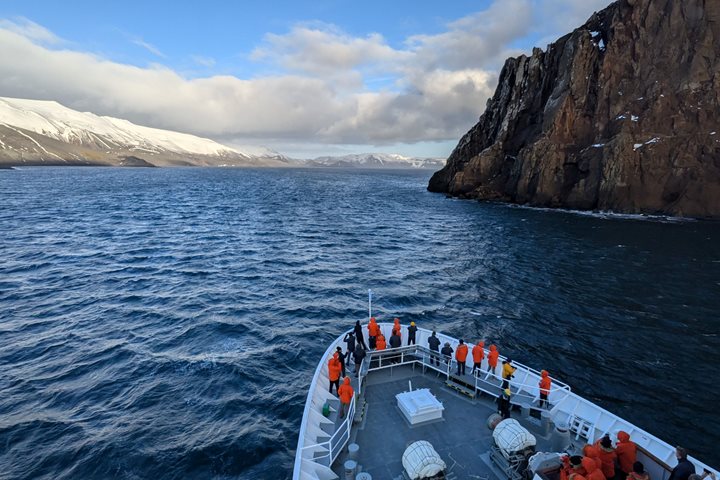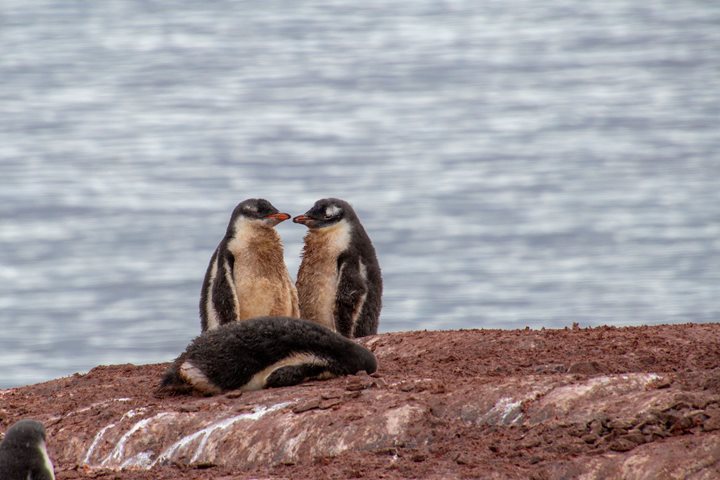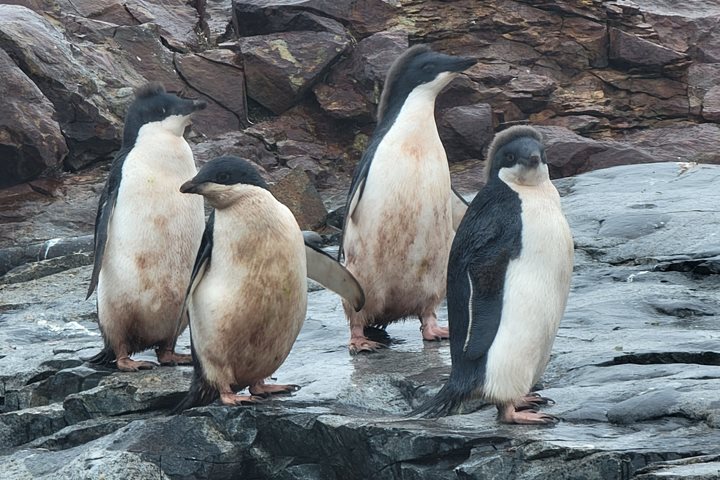Today on National Geographic Explorer, around 90 brave souls took the polar plunge, jumping into freezing water with icebergs floating nearby in Charlotte’s Bay. Charlotte’s Bay is rich in marine life and humpback whales were seen all around the ship as we kayaked and Zodiac cruised.
In the afternoon, we took our first steps on the Antarctic continent at Portal Point. We even had our first sighting of Adelie penguins! In the evening, light streamed through the clouds creating a beautiful landscape and illuminating the flukes of humpback whales as we cruised through the area. We could not have asked for a more spectacular day along the peninsula.







